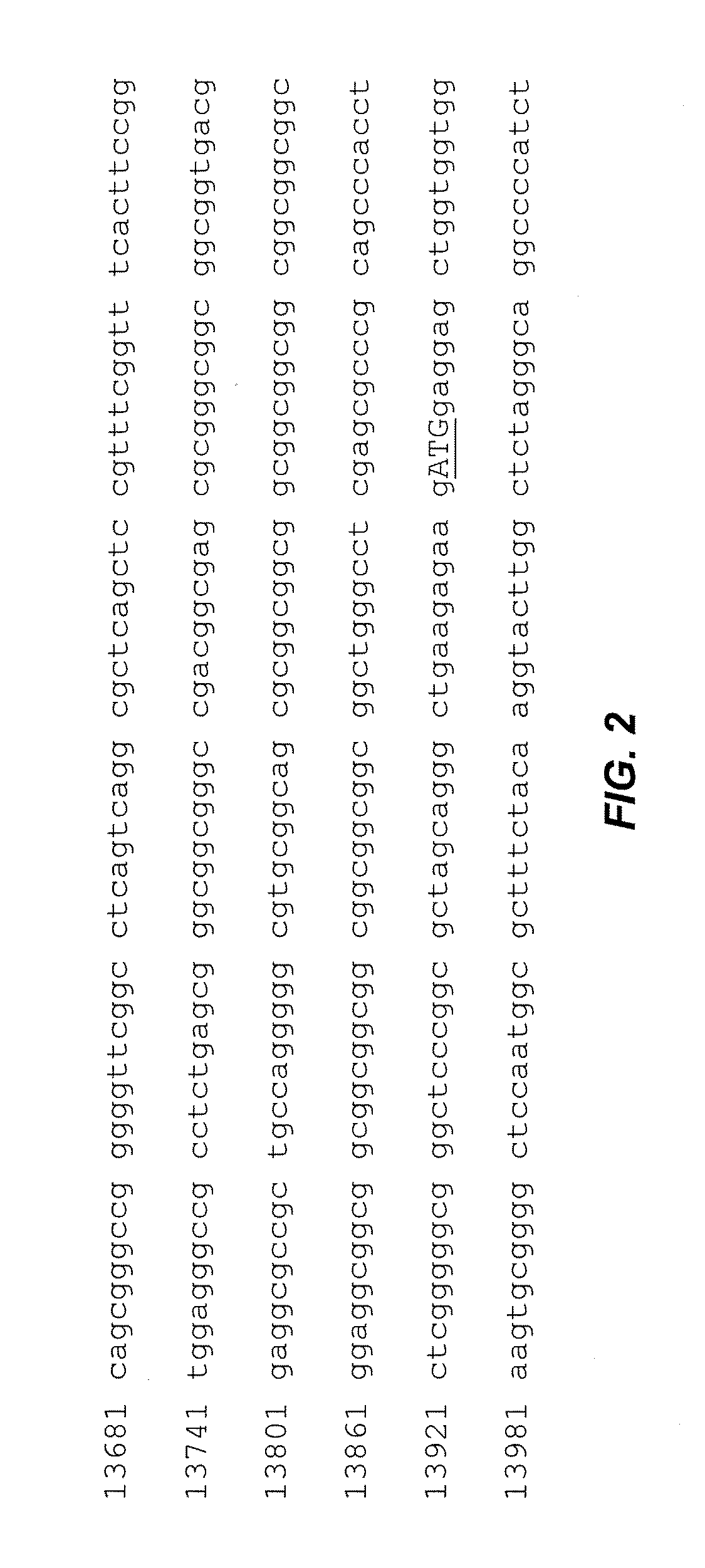Methods for detecting the presence of expanded cgg repeats in the fmr1 gene 5' untranslated region
a technology of fmr1 and untranslated region, which is applied in the direction of instruments, peptide/protein ingredients, peptide sources, etc., can solve the problems of inability to prospectively control studies, inability to detect the presence of expanded cgg repeats in the fmr1 gene 5untranslated region, and failure of fluorescent probe-based fragment analysis. all the tests currently fail
- Summary
- Abstract
- Description
- Claims
- Application Information
AI Technical Summary
Benefits of technology
Problems solved by technology
Method used
Image
Examples
example 1
[0052]During the course of clinical / molecular studies of fragile X syndrome and premutation carriers, more than one-thousand samples (DNA and / or frozen PBMCs) have been archived spanning the normal, premutation, and full mutation size ranges. A sub-set of these samples, representing 980 fully characterized (PCR plus Southern) DNA samples, has the following characteristics:
Allele(1) (# CGG repeats)# males# femalesControls (22282Gray zone (45-54)4018Premutation (55-200)159210 Full mutation (>200)11757Mosaics(2)44(P / F); 22 MM6 MMTotal604373 (1)For females, the larger allele is within the specified range.(2)P / F, premutation / full mutation mosaic; MM, methylation mosaic.
[0053]For the female controls, 30 (52%) were apparent homozygotes (verified as normal alleles by Southern gel analysis). These samples, plus an additional 300 samples not yet fully characterized from both peripheral blood leucocytes and PBMCs, represent an important resource for the validation of the proposed screening met...
example 2
[0054]Initial development of the PCR method of the invention utilized blood samples (not blood spots). Genomic DNA was isolated using the Puregene DNA Blood kit (Gentra, Inc., Minneapolis, Minn.). PCRs were performed using the “c” and “f” primers (5′-agccccgcacttccaccaccagctcctcca-3′ (SEQ ID NO.:1); 5′-gctcagctccgtttcggtttcacttccggt-3′ (SEQ ID NO.:2)(Fu, Y. H. et al., Cell 67:1047-58 (1991)) and performed using the Expand Long Template PCR System (Roche Diagnostics, Mannheim, Germany). Reaction mixtures included buffer 2 (Roche kit), 500 μM dNTPs, 0.33 pM of each primer and 100-500 ng of genomic DNA. The PCR buffer also included 2.0 M betaine (B0300, Sigma-Aldrich, St. Louis, Mo.); this concentration was based on a series of PCR optimization experiments using betaine concentrations from 1.3 to 2.2 M. Previous reports recommended a concentration of 1.3 M (Baskaran, N. et al., Genome Res 6:633-8 (1996)). We found the cited concentration to be too low for efficient expansion of the CGG...
example 3
[0057]For samples from males, the betaine-PCR method is capable of specifying the status (normal, gray-zone, premutation, full mutation) for all samples. Furthermore, for all categories except full mutation, the size of the allele can be determined. For apparent full mutation males (absence of a band), a secondary analysis would be performed by Southern gel to rule in / out full mutation status and to determine the size of the allele (although the latter operation is not formally part of the screen). Absence of a band would be due either to true full mutation alleles or by occasional failure of the PCR reaction. Confirmation of a full mutation allele in such cases could also be performed using the second phase of the PCR-based screening protocol, as used for females with a single band. This secondary screening method would rule out any PCR reaction failure, which could have resulted in the absence of a band for a male. Based on the expectation of one true full mutation allele per ˜1 / 3...
PUM
 Login to View More
Login to View More Abstract
Description
Claims
Application Information
 Login to View More
Login to View More - R&D
- Intellectual Property
- Life Sciences
- Materials
- Tech Scout
- Unparalleled Data Quality
- Higher Quality Content
- 60% Fewer Hallucinations
Browse by: Latest US Patents, China's latest patents, Technical Efficacy Thesaurus, Application Domain, Technology Topic, Popular Technical Reports.
© 2025 PatSnap. All rights reserved.Legal|Privacy policy|Modern Slavery Act Transparency Statement|Sitemap|About US| Contact US: help@patsnap.com


